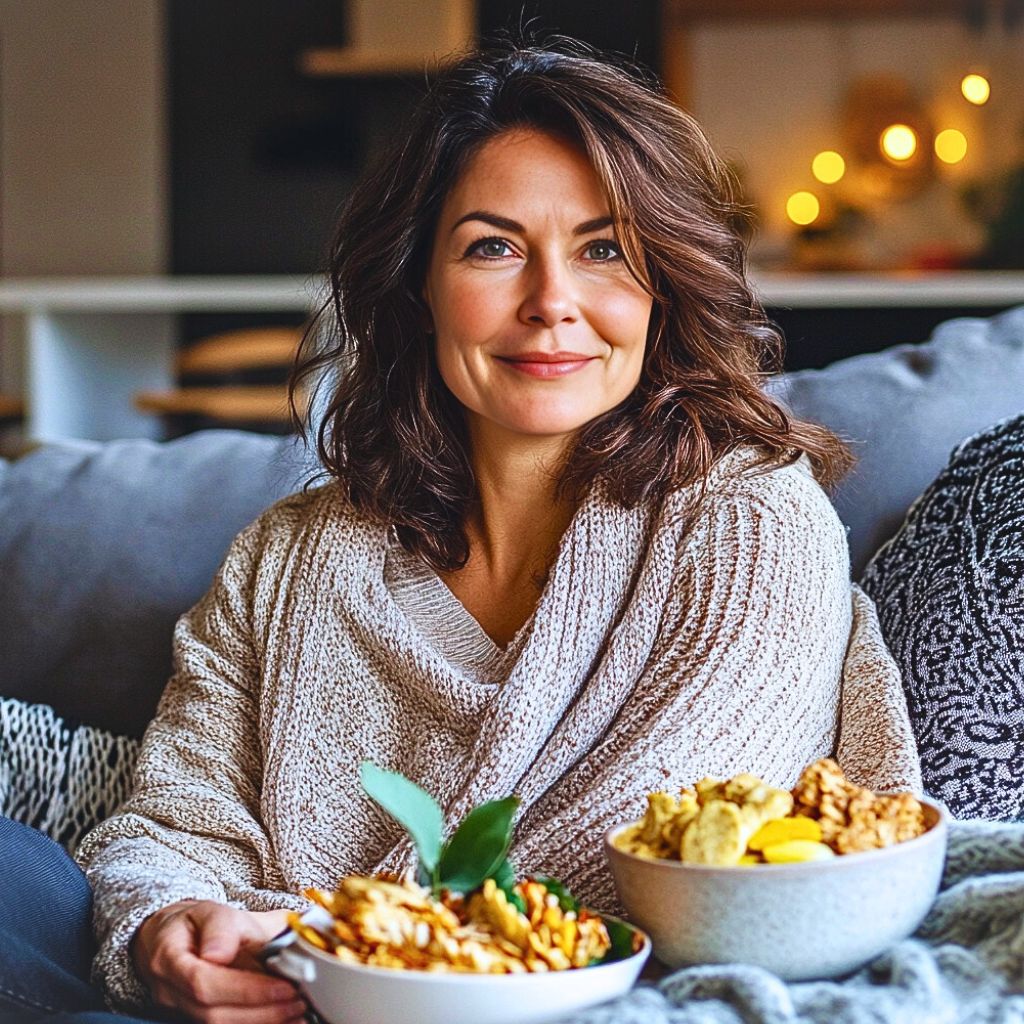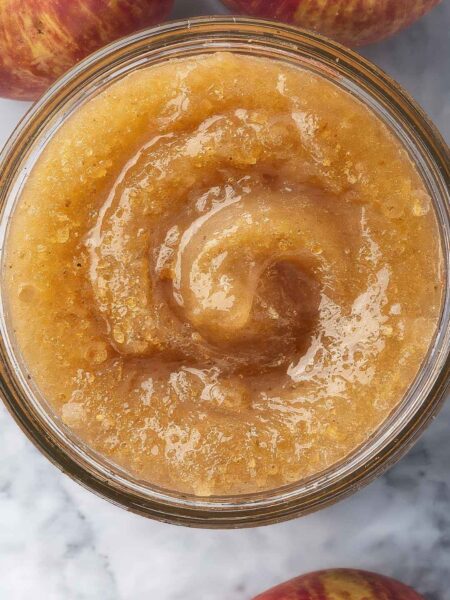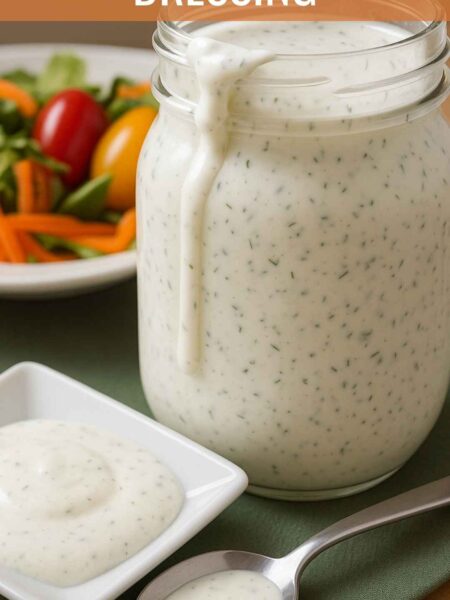As a food enthusiast, nothing quite sets the mood for fall like the rich, warm flavors of pumpkin. When autumn arrives, I find myself dreaming of cozy breakfasts with fluffy pancakes drizzled in maple syrup and adorned with a dollop of silky pumpkin puree.
Sometimes, I even whip up creamy pasta dishes that use this vibrant ingredient—mixing it with sage and parmesan for a comforting fettuccine that feels like a hug.
Let me take you on a tasty journey, showing you how to make your own pumpkin puree. It’s easier than it sounds, and trust me, the taste is far better than anything in a can!
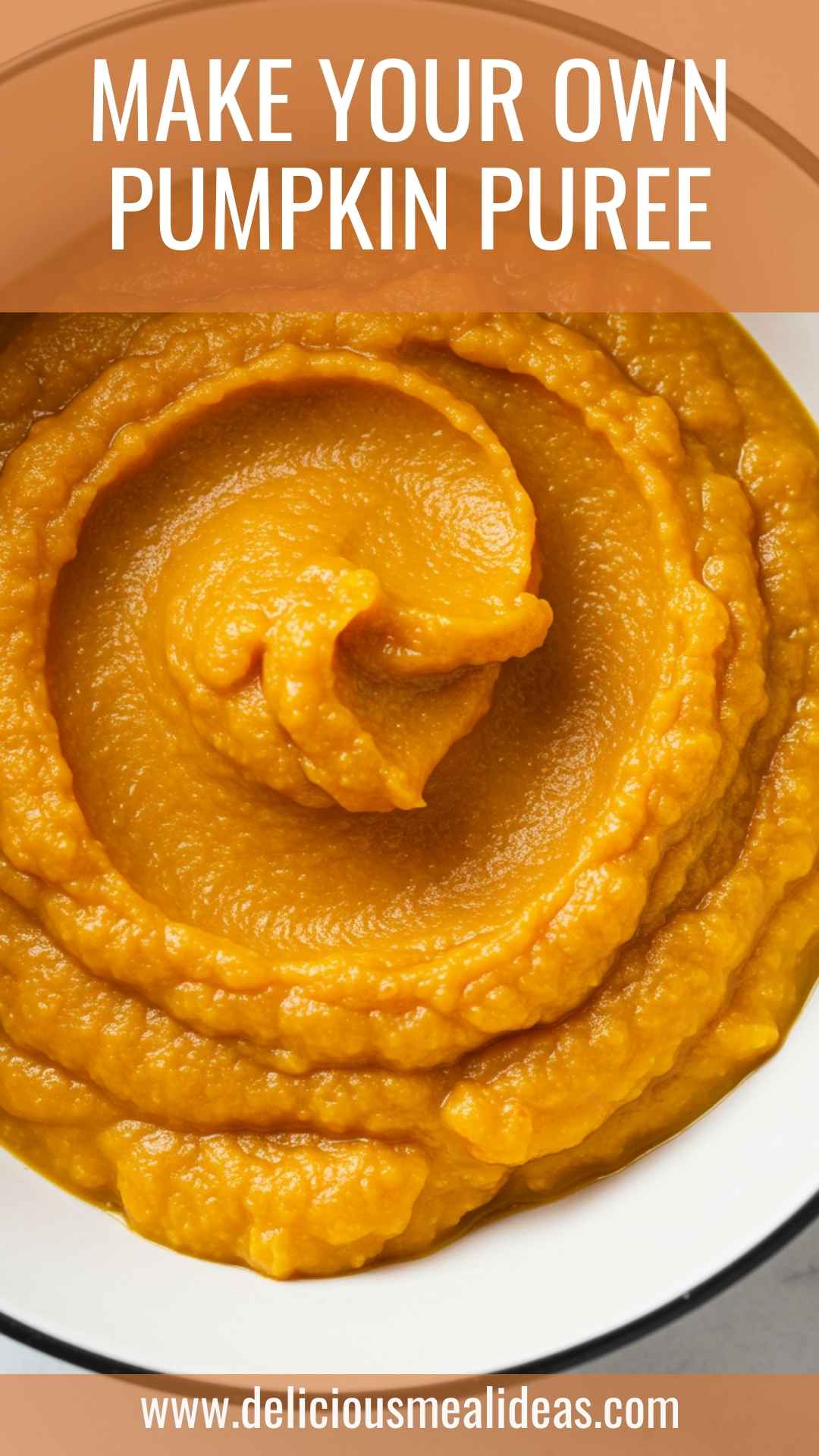
What is Pumpkin Puree?
Pumpkin puree is simply cooked pumpkin that has been blended until smooth. It’s commonly used in recipes for pies, soups, and various baked goods. Making your own version from scratch brings a fresh flavor that canned varieties can’t match.
Plus, it’s fulfilling to know you created something delicious right in your kitchen. The process requires few ingredients and minimal effort, making it perfect for everyone, from the novice cook to the seasoned chef.
The Ingredients
To create a lovely pumpkin puree, gather these simple ingredients:
- 1 tablespoon olive oil
- 1/2 teaspoon ground cinnamon
- A pinch of fine sea salt
- 1 small sugar pumpkin, 4 to 6 pounds
These ingredients create a delightful base for your puree, enhancing the natural sweetness of the pumpkin.
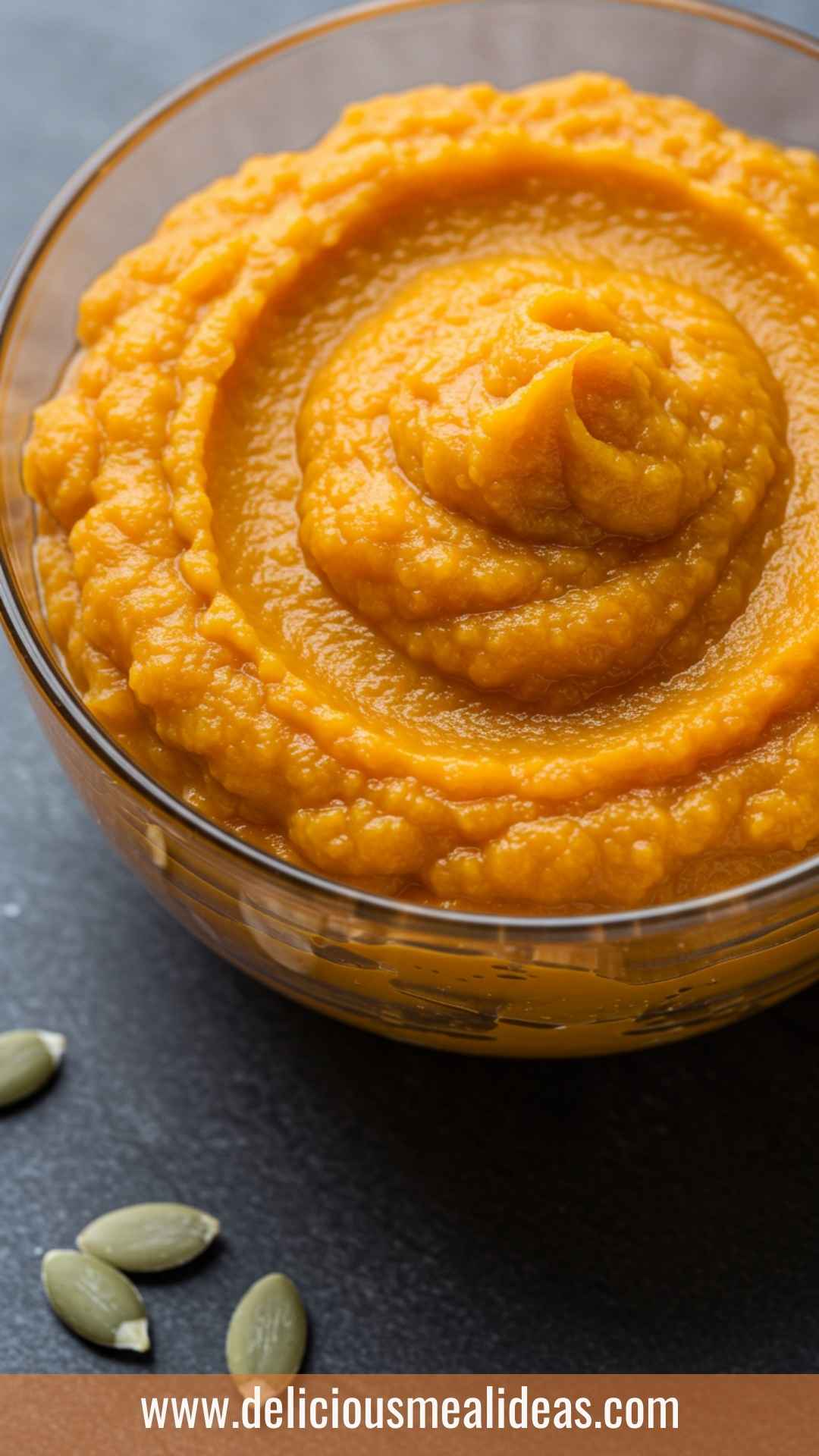
How to Make Your Own Pumpkin Puree: An Overview
Making pumpkin puree at home involves roasting the pumpkin to soften it and then pureeing it until it reaches that velvety texture we crave.
In essence, you get to enjoy the transformation of this humble gourd into a versatile ingredient that you can indulge in throughout the fall season.
Let’s delve deeper into the process with detailed steps.
Step 1: Prepare the Pumpkin
Begin by selecting a good sugar pumpkin. These are smaller than the giant pumpkins you see at Halloween.
They’re sweeter and have a denser flesh, perfect for cooking. Using a sharp knife, carefully cut off the top of the pumpkin. Look out for those fingers! Next, cut it in half to reveal the seeds and stringy insides.
Step 2: Scoop it Out
Take a sturdy spoon and start scooping out the seeds and stringy fibers. Don’t worry if some of the flesh comes out with the strings.
You only need to be careful not to leave too much behind. The seeds can be saved and roasted for a healthy snack later, so pause the puréeing process while you do a little seed harvesting.
Step 3: Cut into Quarters
Once it’s cleaned out, slice each half into quarters. This will make it easier to handle and cook. I usually make three or four cuts, depending on the size of the pumpkin.
Step 4: Roast the Pumpkin
Preheat your oven to 400°F (200°C). Line a baking tray with parchment paper for easy cleanup. Place the pumpkin pieces cut-side down on the tray. Drizzle a tablespoon of olive oil over the pieces and sprinkle a pinch of sea salt. This seasoning enhances the wonderful flavor of the pumpkin as it roasts.
Roast the pumpkin in the oven for about 30-45 minutes. Keep an eye on it. You’ll know it’s done when the flesh is soft and easily pierced with a fork. Your kitchen will smell heavenly—trust me!
Step 5: Puree the Pumpkin
Remove the roasted pumpkin from the oven and let it cool slightly. Once it’s manageable, scoop the flesh into a food processor.
Add the ground cinnamon for that delightful autumn spice. Blend until smooth, adjusting the texture to your preference. If you prefer it a little more liquidy, you can add a few drops of water, but usually, it’s perfect as is.
Step 6: Cool and Store
Transfer your freshly made pumpkin puree to an airtight container. Let it cool completely before sealing. This helps maintain its freshness for future use.
Notes: Tips for Pumpkin Puree Perfection
- Choose the Right Pumpkin: Select sugar pumpkins for the best flavor. Bigger pumpkins are often more fibrous and less sweet.
- Roast Over Boil: Roasting enhances the flavor compared to boiling, which can dilute the natural sweetness.
- Use a Good Processor: For ultra-smooth puree, a high-quality food processor or blender is key.
- Season to Taste: After you’ve made the puree, feel free to adjust the spices according to your liking.
- Batch Processing: If you plan to make a large amount, consider roasting several pumpkins at once. You can freeze the extra puree in ice cube trays for convenient portion sizes later on.
Storage Tips
Homemade pumpkin puree can be stored in the refrigerator for up to one week. If you’re looking to keep it longer, consider freezing it.
Portion the puree into freezer-safe bags or containers and label them. It will maintain its quality for about three months in the freezer.
Serving Suggestions
Here are several tasty ways to use pumpkin puree beyond the classic pie:
- Pumpkin Pancakes: Mix a cup of pumpkin puree into your standard pancake batter for a delightful breakfast twist. Top with maple syrup and pecans for crunch.
- Pumpkin Soup: Blend the puree with vegetable broth, onions, garlic, and spices for a creamy, warming soup. A swirl of cream on top adds a luxurious touch.
- Pumpkin Risotto: Incorporate pumpkin puree into your risotto for an autumnal flair. Stir in Parmesan cheese for richness and flavor.
- Pumpkin Smoothies: Add pumpkin puree to your morning smoothie, blending it with banana, yogurt, and cinnamon. It makes for a hearty and filling drink.
- Pumpkin Muffins: Swap out half the oil in your muffin recipe with pumpkin puree. It keeps your muffins moist and adds a boost of nutrients.
What Other Substitutes Can I Use in Make Your Own Pumpkin Puree?
If you find pumpkin doesn’t suit your palate, here are several alternatives you could explore:
- Butternut Squash Puree: Similar in taste and texture, it offers a sweet, nutty flavor that works wonderfully in desserts and soups.
- Sweet Potato Puree: For a slightly different flavor profile, sweet potatoes can be used interchangeably with pumpkin. It adds sweetness and pairs well with spices.
- Carrot Puree: This provides a unique twist. It’s great in baked goods and can even be added to creamy soups.
- Zucchini Puree: If you’re looking for a lower-calorie option, zucchini can provide bulk to dishes. It has less flavor but is great in muffins and breads.
- Applesauce: While not a direct substitute, unsweetened applesauce can add moisture to baked goods, making them soft and flavorful.

Conclusion
Creating your own pumpkin puree is not just a culinary activity; it’s a celebration of the fall season.
The rich, smooth flavor of homemade puree elevates your dishes and warms your heart. Simple to make, packed with nutrients, and versatile beyond measure, this puree can be the star of your fall recipes.
So gather those pumpkins! Your kitchen is about to become a delightful hub of autumnal flavors. From pancakes to soupy goodness, your homemade pumpkin puree will surely become a staple.
After one taste, you’ll appreciate the time spent in the kitchen crafting something fresh and delicious. Enjoy the journey as much as the final product! Happy cooking!
You’ll also like the following recipes!
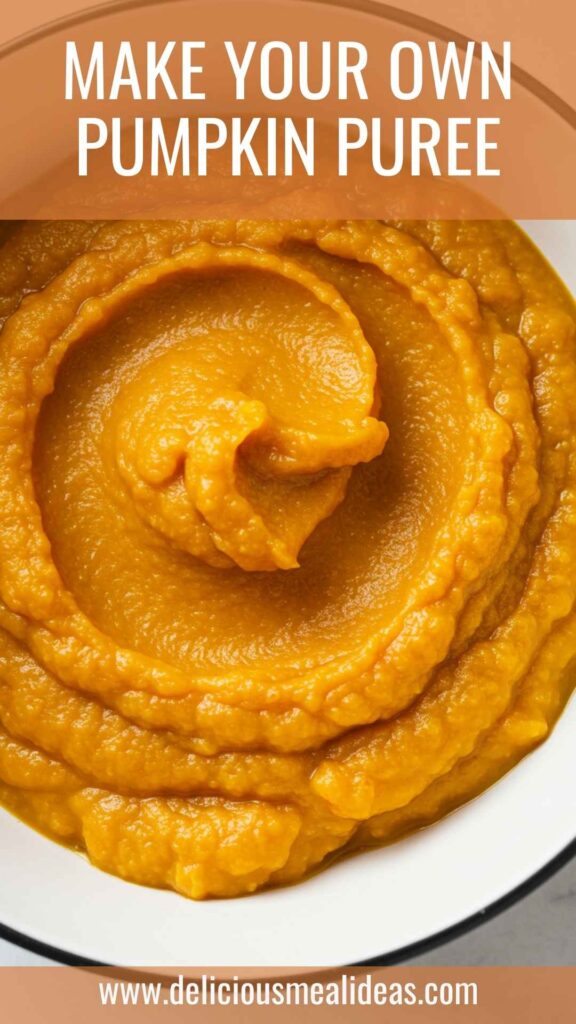
Make Your Own Pumpkin Puree – Delicious Meal Ideas
Description
As a food enthusiast, nothing quite sets the mood for fall like the rich, warm flavors of pumpkin. When autumn arrives, I find myself dreaming of cozy breakfasts with fluffy pancakes drizzled in maple syrup and adorned with a dollop of silky pumpkin puree.
Ingredients
Instructions
Step 1: Prepare the Pumpkin
-
Begin by selecting a good sugar pumpkin. These are smaller than the giant pumpkins you see at Halloween.
They’re sweeter and have a denser flesh, perfect for cooking. Using a sharp knife, carefully cut off the top of the pumpkin. Look out for those fingers! Next, cut it in half to reveal the seeds and stringy insides.
Step 2: Scoop it Out
-
Take a sturdy spoon and start scooping out the seeds and stringy fibers. Don’t worry if some of the flesh comes out with the strings.
You only need to be careful not to leave too much behind. The seeds can be saved and roasted for a healthy snack later, so pause the puréeing process while you do a little seed harvesting.
Step 3: Cut into Quarters
-
Once it's cleaned out, slice each half into quarters. This will make it easier to handle and cook. I usually make three or four cuts, depending on the size of the pumpkin.
Step 4: Roast the Pumpkin
-
Preheat your oven to 400°F (200°C). Line a baking tray with parchment paper for easy cleanup. Place the pumpkin pieces cut-side down on the tray. Drizzle a tablespoon of olive oil over the pieces and sprinkle a pinch of sea salt. This seasoning enhances the wonderful flavor of the pumpkin as it roasts.
Roast the pumpkin in the oven for about 30-45 minutes. Keep an eye on it. You'll know it’s done when the flesh is soft and easily pierced with a fork. Your kitchen will smell heavenly—trust me!
Step 5: Puree the Pumpkin
-
Remove the roasted pumpkin from the oven and let it cool slightly. Once it’s manageable, scoop the flesh into a food processor.
Add the ground cinnamon for that delightful autumn spice. Blend until smooth, adjusting the texture to your preference. If you prefer it a little more liquidy, you can add a few drops of water, but usually, it’s perfect as is.
Step 6: Cool and Store
-
Transfer your freshly made pumpkin puree to an airtight container. Let it cool completely before sealing. This helps maintain its freshness for future use.
Nutrition Facts
Servings 5
- Amount Per Serving
- Calories 41kcal
- % Daily Value *
- Total Fat 3.5g6%
- Saturated Fat 0.6g3%
- Sodium 18mg1%
- Total Carbohydrate 1g1%
- Dietary Fiber 1g4%
- Protein 2g4%
* Percent Daily Values are based on a 2,000 calorie diet. Your daily value may be higher or lower depending on your calorie needs.
Note
- Choose the Right Pumpkin: Select sugar pumpkins for the best flavor. Bigger pumpkins are often more fibrous and less sweet.
- Roast Over Boil: Roasting enhances the flavor compared to boiling, which can dilute the natural sweetness.
- Use a Good Processor: For ultra-smooth puree, a high-quality food processor or blender is key.
- Season to Taste: After you’ve made the puree, feel free to adjust the spices according to your liking.
- Batch Processing: If you plan to make a large amount, consider roasting several pumpkins at once. You can freeze the extra puree in ice cube trays for convenient portion sizes later on.


